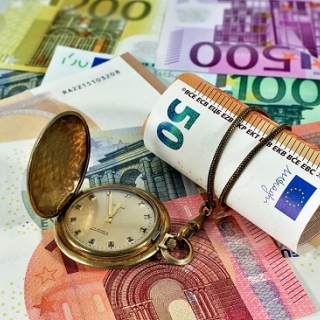


The EUR/USD pair posted modest gains on Thursday (July 31st), following a sharp sell-off over the past three days. The pair resumed its decline on Wednesday following strong US Gross Domestic Product (GDP) figures and a hawkish message from the Federal Reserve (Fed).
The euro (EUR) was trading at 1.1435 at the European market open, up from a seven-week low of 1.1400 reached after the Fed's monetary policy decision on Wednesday, but still on track for a 3% depreciation in July.
The US emerged as the best-performing nation in this eventful week. US data continued to show that the economy remains resilient, and the Federal Reserve maintained its cautious stance on interest rate cuts. At the same time, agreements with major US trading partners have eased some of the trade uncertainty that had hurt the US dollar earlier in the year.
On Wednesday, preliminary data released by the US Department of Commerce revealed that the economy grew more than expected in the second quarter, further justifying the Fed's decision to wait longer to better assess the impact of tariffs on the economy.
The Fed confirmed these expectations and maintained its benchmark interest rate, ignoring US President Donald Trump's calls for looser policy and providing little indication of the timing of the next rate cut. Investors reduced their expectations for Fed policy easing this year, and the US dollar continued to strengthen overall.
Thursday's focus will be on the US Personal Consumption Expenditures (PCE) Price Index, the Fed's preferred inflation gauge that may provide further insight into the central bank's monetary policy, ahead of Friday's all-important Nonfarm Payrolls report. (alg)
Source: FXstreet
EUR/USD is steady late during the North American session as investors digest a soft jobs report and shrugs off the shutdown of the US government. The lack of an agreement between the White House and D...
EUR/USD holds firm on Tuesday during the North American session, although the Dollar weakens due to fears of a possible government shutdown that could disrupt the release of crucial jobs data for Fed ...
EUR/USD registers gains of over 0.20% on Monday amid worries of a possible government shutdown in the US, while data in the Eurozone, showed that sentiment improved but failed to propel the shared cur...
EUR/USD continued its rally for the second consecutive session, trading around 1.1720 during the Asian session on Monday. The pair strengthened as the US dollar (USD) weakened after the August US infl...
EUR/USD is posting moderate gains on Friday, trading near 1.1675 at the time of writing on Friday from 1.1645 daily lows, but remains on track for a 0.55% weekly decline. In the United States (US), a ...
Oil prices plunged more than 2% on Tuesday as the International Energy Agency (IEA) warned of a significant oversupply by 2026, and due to ongoing trade tensions between the US and China, the world's two largest economies. Brent crude futures fell...
Fed Chairman Jerome Powell hinted that the central bank may stop shrinking its balance sheet in the coming months. The Fed chairman also indicated that the labor market outlook continues to deteriorate, a message that supports investor...
European stocks fell on Tuesday (October 14th), with the Stoxx 50 and Stoxx 600 both down around 0.3%, as escalating US-China trade tensions weighed on sentiment. Risk-sensitive sectors such as automotive and mining led the decline after Beijing...
 European stocks started the week in positive territory, with the STOXX 50 rising 0.9% and the STOXX 600 adding 0.6%, as traders geared up for the...
European stocks started the week in positive territory, with the STOXX 50 rising 0.9% and the STOXX 600 adding 0.6%, as traders geared up for the...
 Asia-Pacific markets traded mixed Tuesday, breaking ranks with Wall Street that soared after U.S. President Donald Trump softened his stance on...
Asia-Pacific markets traded mixed Tuesday, breaking ranks with Wall Street that soared after U.S. President Donald Trump softened his stance on...
 President Donald Trump arrived in the Egyptian resort of Sharm El-Sheikh on Monday for a summit with several other world leaders aimed at ensuring...
President Donald Trump arrived in the Egyptian resort of Sharm El-Sheikh on Monday for a summit with several other world leaders aimed at ensuring...
 Asia-Pacific markets fell Monday after China and the U.S. tightened trade restrictions and traded fresh accusations, renewing tensions between the...
Asia-Pacific markets fell Monday after China and the U.S. tightened trade restrictions and traded fresh accusations, renewing tensions between the...